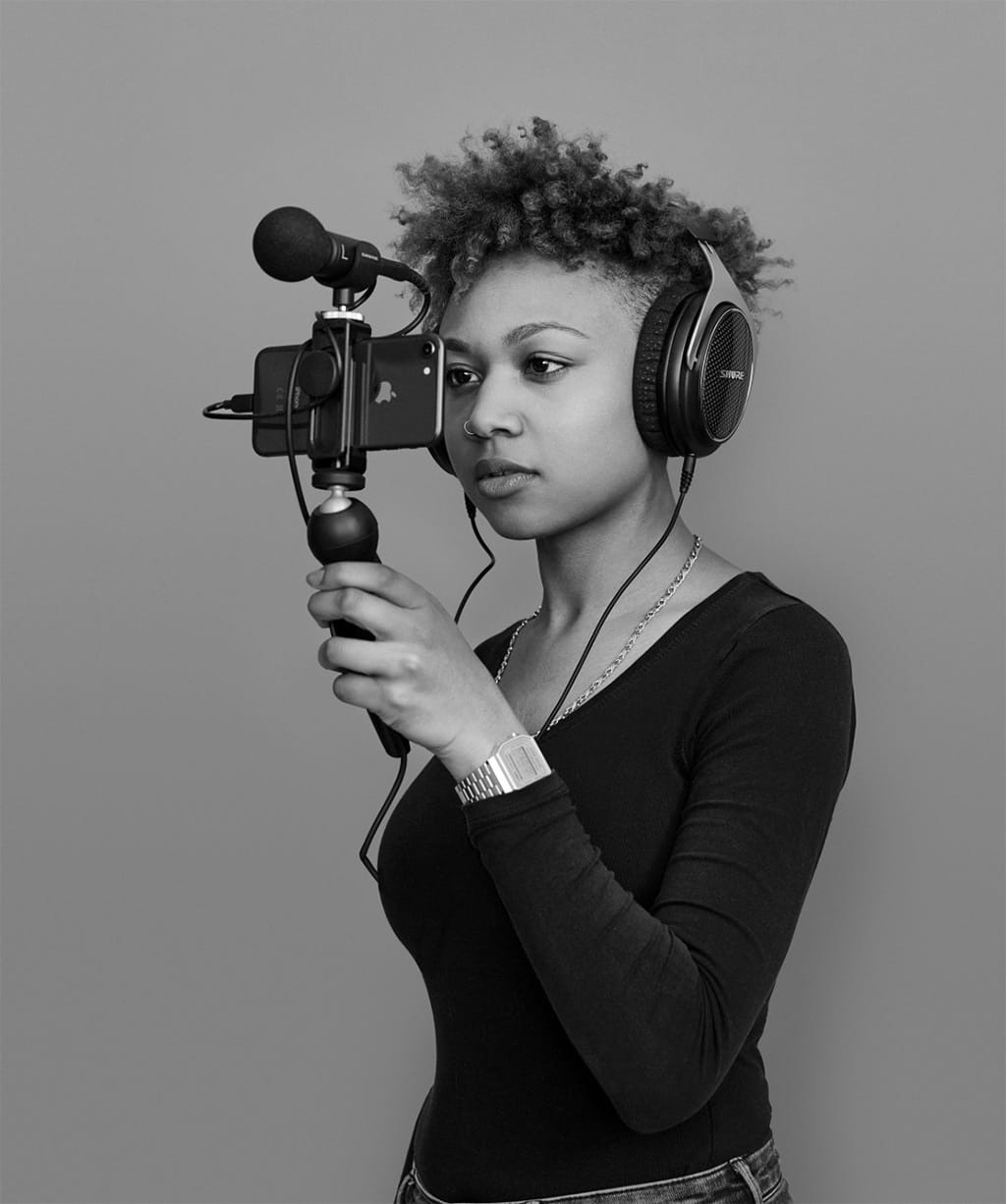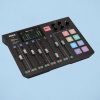
Review: Shure MV88+ Video Kit
Mono to Mid-Side and everything in-between, Shure’s little phone recording kit has it all.
Shure’s original Motiv MV88 was a reasonably svelte iOS stereo condenser mic. Sure, its chunky base plate gave it similar dimensions to an early Rode iXY, but it packed in the features to compensate. By opting for a Mid-Side stereo mic configuration, the MV88 allowed you to tailor your capture width in degrees from mono through to raw MS and every stereo flavour in-between.
The Motiv M88+ is a bit plus-sized when compared with the original. It has the same finger-width capsule head, but its rear end has some real girth. The added bulk allowed Shure to squeeze it into a standard mic clip, and stuff in a headphone amplifier for real-time monitoring. With only a few volts of power available for phone peripherals to siphon off, these sorts of headphone amps tend to be relatively weak. The MV88+ is no different here, it enhances the sensation of what you’re recording but isn’t loud enough to isolate you from the raw sound.
In the app you can slide the monitoring source between the mic and playback, but I’m not sure why as the app doesn’t have any overdubbing features, nor does the slider adjust the headphone volume from its fixed level.
APP-Y DAYS
There are actually two free-to-download apps you can use: Motiv Audio and Motiv Video. The audio controls are exactly the same on both, with the Video app additionally tapping into your phone camera. At first glance, it appears to allow WAV recording in your video files. I’m unsure what internal processing this may relate to, but all the videos on my iPhone outputted with the standard AAC-encoded audio regardless of the setting I chose.
Besides that, the apps are very well-designed. They allow up to 36dB of mic gain, which tends to be enough when paired with the sensitivity of the capsule. There’s also a switchable dual-stage high-pass filter; a limiter you can turn on or off; a compressor with three strength settings; and a five-band graphic EQ. If you manage to miss the big L and R markings on the mic barrel, there’s also a left/right swap function.
These are all user-adjustable, or you can opt for one of five preset DSP settings with icons for sources like Speech and Guitar. These tailor all the settings at once, including the stereo polar pattern.
Beyond that, the Audio app has a relatively straightforward marker and editing system. While the Video app simply sends the videos to your camera roll.
NEED TO KNOW
KITTED OUT
The kit comes with multiple accessories, including separate USB-C and Lightning cables for Android and iOS, and a neat roll-up neoprene carry pouch. The best accessory is not a Shure design. The Manfrotto Pixi mini tripod – which would set you back $30 outside of the kit – is sturdy, folds out quickly, and by holding down the little red Manfrotto logo you can swivel the ball head in any direction. It’s far less annoying than untangling the legs of a Gorilla Pod.
The actual phone holder design feels sub par. All the parts seem well apportioned; the rubber pads are reassuringly grippy, the knurled thumb screw doesn’t give the sense it’ll strip out in a hot minute, and the plastic is decently thick. Put it all together though, and it just doesn’t slide well or tension down on your phone without a two-handed approach. It does the job, but I’ve seen better results from those spring-tensioned jobbies you can score off eBay for a couple of bucks.
On the plus side, the cold shoe-style mic clip mount is dead easy to unscrew, so you can swivel the mic orientation between selfie mode and… the other one… in a jiffy.
If you’re not using your phone to record, you can simply abandon the phone holder and just use the tripod as a mic stand, which is great for interviews and podcasts. Alternatively, you can ditch the tripod for a handheld recording solution.
MOBILE RECORDING DECODED
The best part of the MV88+ is still what made the MV88 an appealing option; its ability to record in Mid-Side and decode it on the fly. The MV88+ kit simply decodes the remainder of the process. Pulling together all the accessories you’d be buying anyway, adding a headphone amp, and making it phone agnostic. If you’re interested in using your phone as a serious recording device, and don’t want to cobble together the necessary pieces yourself, look no further.

























RESPONSES